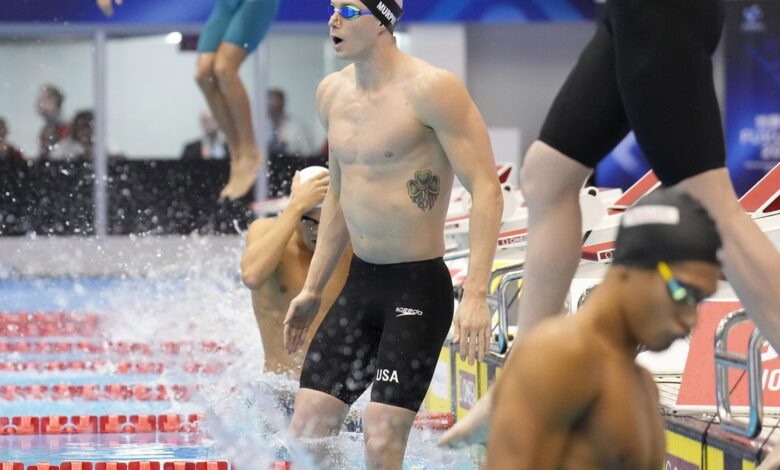
Fifteen years ago, Michael Phelps achieved a record eight gold medals at the Beijing Olympics wearing a high-tech swimsuit known as the Speedo LZR Racer.
The era of super suits lasted just one more year before being discontinued due to concerns about their effect on record times. Nevertheless, the choice of swimwear still holds significance for athletes.
Abbey Weitzeil, a four-time Olympic medalist sponsored by Speedo, emphasized the impact of swimwear, particularly for female swimmers. She stated, “It makes a huge difference, especially for the females. We have more coverage than the males. We want to take advantage of that.”
With the Paris Olympics approaching, Speedo has unveiled its latest suits, featuring updated versions of the Fastskin LZR Intent and LZR Valor.
While these announcements may not generate the same level of excitement as previous suit launches, they underscore the ongoing pursuit of innovation and performance enhancement within the sport.
The international governing body has implemented regulations to limit the influence of swimsuits on performance, including restrictions on materials and coverage for both men and women.
Despite these regulations, significant advancements and refinements in swimsuit technology continue to be made, all geared toward gaining a competitive edge.
Ryan Murphy, a four-time Olympic medalist, emphasized the importance of marginal gains in racing, stating, “It really comes down to the margins of the race. A 1% difference in a 51-second race is a half-second.”
Speedo’s latest suits, developed in collaboration with Lamoral, offer improved water repellence and less absorption compared to previous iterations, recalling the innovation of the iconic LZR Racer.
Murphy highlighted the extensive testing and development process for the new suits, emphasizing the importance of individual preferences and performance needs for each swimmer.
For Murphy, the thinner design of the Valor suit provides the comfort and flexibility essential for his backstroke events, while Weitzeil favors the tighter compression of the Intent suit for its flexibility and support.
Despite not having experienced the super suit era, both Murphy and Weitzeil expressed intrigue about its impact, acknowledging the lasting legacy of that period on the sport.
In reflecting on the evolution of swimsuit technology, Murphy described the shift from the super suit era and its focus on pure force and power to the present emphasis on performance enhancement and comfort for athletes.
Although today’s swimsuits may not wield the same transformative power as the super suits of the past, they remain a crucial factor in determining race outcomes and providing athletes with an added sense of confidence and assurance.
Overall, the continuous pursuit of innovation in swimsuit design and technology underscores the enduring quest for excellence and the ongoing evolution of competitive swimming.
___
Paul Newberry is a national sports writer for The Associated Press. Contact him at pnewberry@ap.org
___




